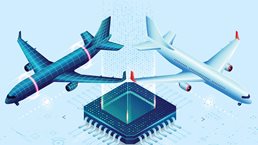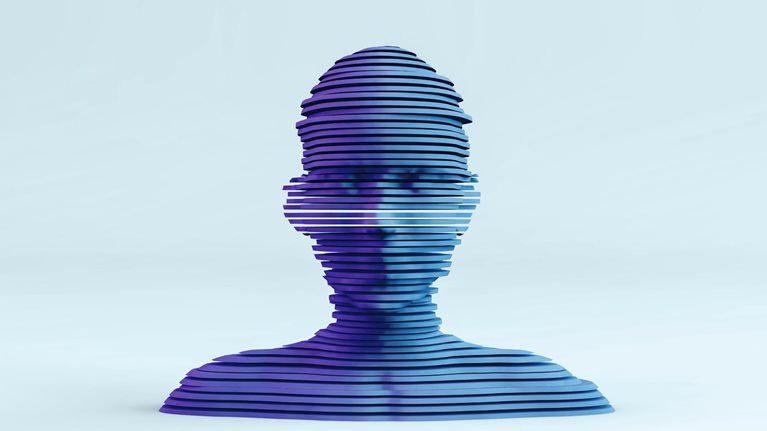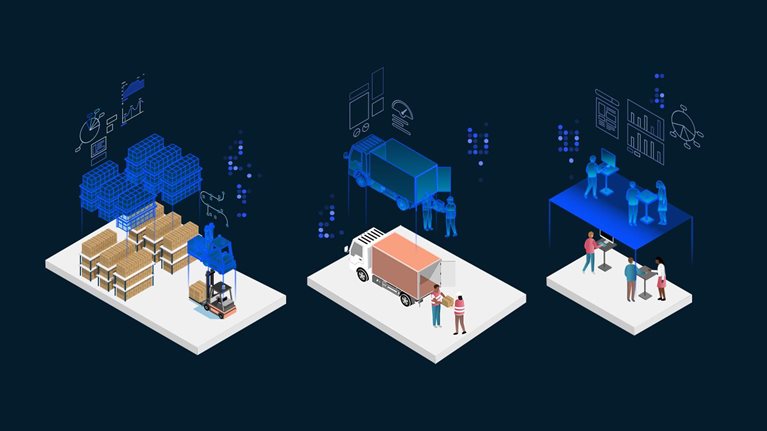
What would you do if you had a copy of yourself? A digital doppelgänger, identical to you in every way, in an accurate digital rendering of your home, workplace, neighborhood, or city? Even better: What if the digital version of you—your digital twin—was impervious to injury, pain, or embarrassment? The mind boggles at the possibilities. Suffice it to say, you’d probably be able to make decisions for yourself with a lot more certainty of the outcome.
Get to know and directly engage with senior McKinsey experts on digital twins.
Kayvaun Rowshankish, Rodney W. Zemmel, and Tomás Lajous are senior partners in McKinsey’s New York office. Kimberly Borden is a senior partner in the Chicago office.
In business, this heightened degree of certainty is extremely valuable—and emerging digital twins may help deliver it.
Put simply, a digital twin is a virtual replica of a physical object, person, or process that can be used to simulate its behavior to better understand how it works in real life. Digital twins are linked to real data sources from the environment, which means that the twin updates in real time to reflect the original version. Digital twins also comprise a layer of behavioral insights and visualizations derived from data. When interconnected within one system, digital twins can create a digital and often immersive environment that replicates and connects every aspect of an organization to optimize simulations, scenario planning, and decision making.
Creative product development leaders are increasingly enthusiastic about digital twins. McKinsey analysis indicates the global market for digital-twin technology will grow about 60 percent annually over the next five years, reaching $73.5 billion by 2027.

Looking for direct answers to other complex questions?
What are different types of digital-twin technology?
There are a few different types of digital twins. First, there’s a product twin, which is a representation of a product. This digital twin can include products at various stages of the life cycle, from initial concept design and engineering through full functionality—meaning you get live, real-time data on a product as if it’s in service.
Another type of digital twin is a data twin. You probably already have a great example of a data twin in your pocket: Google Maps is a digital twin of the Earth’s surface. It links real-time data on traffic to help optimize your commute.
Other types of twins include systems twins, which model the interaction between physical and digital processes, including manufacturing processes, end-to-end supply chain management, store operations, and customer journeys. And finally, infrastructure twins represent physical infrastructure such as a highway, a building, or even a stadium.
Digital twins have the potential to deliver more agile and resilient operations. And their potential isn’t lost on CEOs: McKinsey research indicates that 70 percent of C-suite technology executives at large enterprises are already exploring and investing in digital twins.
Learn more about McKinsey Digital and McKinsey’s Operations Practice.
What are the three dimensions of a product digital twin?
Product digital twins can be characterized by three key dimensions:
- the level of modeling and data sophistication employed
- the physical scope of the twin
- the parts of the value chain the twin encompasses, whether in the engineering, production, or service phase
An organization’s journey with a digital twin includes each of these dimensions. A digital-twin project might start with a single, critical component and then expand to a whole product as the company’s digital-twin maturity increases.
What is a supply chain digital twin?
Maintaining supply chains is a top priority across organizations. McKinsey analysis indicates that supply chain disruptions cost, on average, 45 percent of one year’s cash profit. Organizations are aware of the risk: an estimated 86 percent of companies recently surveyed are investing in supply chain transformation to respond to industry disruptions.
Digitally enabled supply chains deploy digital-twin and AI technology to drive optimization and efficiency. They take data captured from all facets of an organization’s operations and model the data to mimic physical assets, people, and processes. Based on insights from a twin, an organization’s leaders can freely experiment, increase their decision-making speed by up to 90 percent, and more.
Top-performing companies we surveyed are already aware of the benefits of this technology: among companies investing in supply chain disruption, digital twins rank in the top three investment priorities.
What are some other kinds of digital twins, and what kind of value can they bring to an organization?
In general, digital twins can drive value across an organization by increasing visibility into real-time and predicted performance, while derisking and optimizing product development, operations, customer relationships, and more.
More specifically, data twins provide visibility into operations, profitability, and customer touchpoints. Data twins can improve decision making, providing real-time visibility into in-transit inventory, customer journeys, and staffing. Data twins can also help organizations adhere to increasingly common regulations requiring upstream visibility into sourcing, especially in healthcare, high tech, and government.
Systems twins help drive cost optimization, increase throughput, improve customer experience, and heighten resilience to supply-and-demand shocks. In McKinsey’s experience, companies have reduced transportation costs and labor by as much as 10 percent, while increasing consumer promise—meaning allowing organizations to more reliably deliver on their promises to customers—by up to 20 percent. All the while, digital twins help improve resiliency by creating networks that perform under a variety of supply-and-demand scenarios.
Customer digital twins can add significant value as well, particularly top-line growth and improved customer experience. In McKinsey’s experience, organizations have posted revenue increases of as much as 10 percent by developing digital twins of their customers, allowing those customers to fully interact and immerse themselves within a company’s product. Mercedes-Benz (formerly Daimler), for example, has developed customer twins that allow customers to “test drive” a vehicle without ever getting behind the wheel.
Product digital twins can significantly reduce time to market. Conversations with senior R&D leaders show that digital twins have cut development times by up to 50 percent for some users, reducing cost along the way. Product digital twins can allow for rapid iterations and optimizations of product designs—far faster than physically testing every single prototype. What’s more, these digital twins can result in significant improvements in product quality. By simulating the product throughout the manufacturing process, it’s possible to identify flaws in the design much earlier. (“The companies that harness [digital-manufacturing twins] first,” says McKinsey senior adviser Will Roper, “will really shake up the markets they’re in.”) And finally, by mirroring a product in service, it’s possible to create a single source of truth for how the design is functioning, allowing for real-time adjustment or redesign.
Learn more about McKinsey Digital and McKinsey’s Operations Practice.
What kinds of organizations are already using digital twins?
A key element an organization needs for implementing digital twins is digital maturity. This essentially means data: a high-quality data infrastructure that delivers reliable data from both testing and live environments, as well as the talent needed to build and maintain that infrastructure.
Organizations in advanced industries are leading the charge: our survey data indicates that almost 75 percent of companies have already adopted digital-twin technologies that have achieved at least medium levels of complexity. These include organizations in a variety of industries, from automotive, aerospace, and defense to technology, retail, and consumer goods. Logistics, infrastructure, and energy players are more likely to be developing their first digital-twin concepts.
How are companies using digital-twin technology?
Interest in digital twins, combined with rapidly advancing supportive technologies, is spurring market estimates for digital-twin investments of more than $48 billion by 2026. We’re already seeing some advanced implementations:
- Emirates Team New Zealand. A digital twin of sailing environments, boats, and crew members enables Emirates Team New Zealand to test boat designs without actually building them. This has allowed the champion sailing team to evaluate thousands—rather than just hundreds—of hydrofoil designs.
- Anheuser-Busch InBev. A brewing and supply chain digital twin enables brewers to adjust inputs based on active conditions and can automatically compensate for production bottlenecks (for instance, when vats are full).
- SoFi Stadium. To help optimize stadium management and operations, a digital twin aggregates multiple data sources including information about the stadium’s structure and real-time football data.
- Space Force. This branch of the US Armed Forces is creating a digital twin of space, including replicas of extraterrestrial bodies and satellites.
- SpaceX. A digital twin of SpaceX’s Dragon capsule spacecraft enables operators to monitor and adjust trajectories, loads, and propulsion systems with the goal of maximizing safety and reliability during transport.
Can digital-twin technology be combined with generative AI?
Generative AI (gen AI) and digital twins can be used symbiotically. For its part, gen AI can structure inputs and synthesize outputs of digital twins, and digital twins can provide a robust test-and-learn environment for gen AI. By combining these two technologies, organizations can achieve exponentially more than they could by using just one.
More specifically, organizations can assign large language models (LLMs) to create code for a digital twin using a software development platform like GitHub. A digital-twin prototype created by LLMs could serve as a starting point for developers across digital-twin projects and even industries. LLMs can also help digital twins once they are already working, by processing and transferring the data that digital twins need to perform.
For more on the potential synergies between gen AI and digital twins, read “Digital twins and generative AI: A powerful pairing.”
How can digital twins affect an organization’s environmental sustainability?
Digital twins can be particularly helpful in improving sustainability efforts. Product digital twins can help organizations reduce the material used in a product’s design, as well as improve the traceability of a product to reduce environmental waste. Consumer electronics manufacturers have made significant improvements to sustainability by using digital twins, reducing scrap waste by roughly 20 percent. Supply chain digital twins can help organizations balance cost and speed with increased sustainability. And data twins can give organizations more visibility into upstream suppliers’ sustainability.
Learn more about McKinsey’s Operations Practice.
What are some challenges organizations face in digital-twin development?
Digital twins require new ways of working, within R&D functions and beyond them. This means a successful digital-twin program is a change management effort, requiring senior management support and a strong project management team.
To overcome potential roadblocks, companies can adopt a phased approach to digital-twin adoption:
- Competitive intelligence and scoping phase. First, the organization identifies the digital-twin solutions available in its sector and estimates the potential value for each type. The organization can also develop a framework for its digital-twin transformation.
- Architecture design and software stack definition phase. Here, the organization identifies the specific software components, relationships, and interfaces it will need to achieve its digital-twin goals. It also decides whether these components will be developed in-house or externally.
- Software-development-excellence phase. The final phase before launch is one in which the organization develops the processes and capabilities it needs to launch its digital-twin platform.
Learn more about McKinsey Digital and McKinsey’s Operations Practice, and explore digital-operations-related job opportunities if you’re interested in working at McKinsey.
Pop quiz
Articles referenced:
- “Digital twins: When and why to use one,” April 30, 2024, Mickael Brossard, Mithun Kamat, Tomás Lajous, Kayvaun Rowshankish, and Cenk Tunasar
- “Digital twins and generative AI: A powerful pairing,” April 11, 2024, Alex Cosmas, Guilherme Cruz, Sebastian Cubela, Mark Huntington, Sohrab Rahimi, and Sanchit Tiwari
- “Digital twins: The next frontier of factory optimization,” January 10, 2024, Sean Camarella, Michael P. Conway, Kevin Goering, and Mark Huntington
- “Digital twins: The key to smart product development,” July 31, 2023, Roberto Argolini, Federico Bonalumi, Johannes Deichmann, and Stefania Pellegrinelli
- “Digital twins: Flying high, flexing fast,” November 16, 2022, Kimberly Borden
- “Digital twins: What could they do for your business?,” October 3, 2022, Kimberly Borden and Anna Herlt
- “Digital twins: The foundation of the enterprise metaverse,” September 2022, Joshan Abraham, Guilherme Cruz, Sebastian Cubela, Tomás Lajous, Kayvaun Rowshankish, Sanchit Tiwari, and Rodney Zemmel
- “Digital twins: The art of the possible in product development and beyond,” April 28, 2022, Mickael Brossard, Sebastien Chaigne, Jacomo Corbo, Bernhard Mühlreiter, and Jan Paul Stein
- “Flying across the sea, propelled by AI,” March 17, 2021
This article was updated in August 2024; it was originally published in July 2023.



